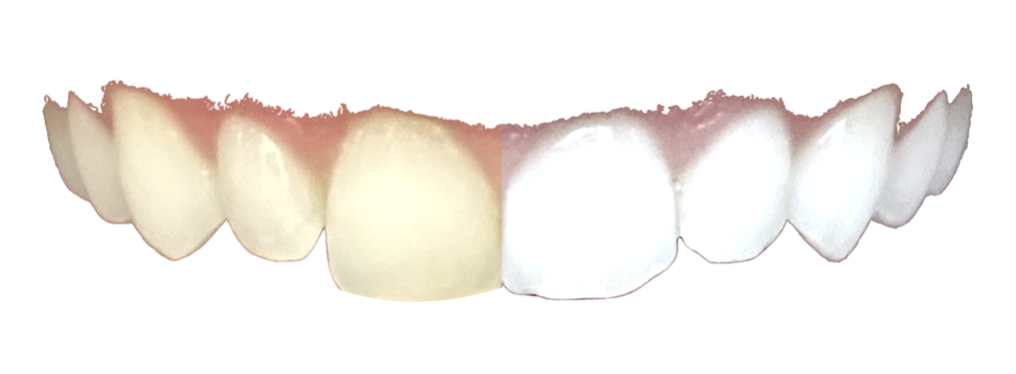Teeth Whitening After Braces or Invisalign®
25 August 2023 | By Dr. Eric Meyer
After getting your braces removed, you may consider teeth whitening to compliment your great smile and enhance the shade of your teeth.
Here are a few things to consider before starting whitening:
When can I start whitening my teeth?
It is best to wait until braces are removed or the “tooth-colored bumps” with Invisalign® are removed before whitening teeth. This will allow the whitening agent to whiten the entire surface without interference from braces or Invisalign® attachments.
If you are planning on having any dental restorations completed, it is best to coordinate with your dentist and typically whiten teeth prior to any restorative work being done. This will allow your dentist to closely match the restoration to the shade you have settled on after whitening your teeth.
It can be more difficult to match the shade of your teeth with a restoration the opposite way. This is why it is important to note that if you have existing restorations or crowns, they will NOT change color with whitening. It may not be esthetic when all the teeth are a whiter shade than a few teeth with dental restorations or fillings. In this case you may need those redone or touched up by your restorative dentist.
How long does it take to whiten teeth?
It depends on the amount of whitening desired from the initial shade of your teeth, as well as the method of tooth whitening. For example, in-office whitening takes place over a short appointment, as opposed to at-home whitening, which takes days or weeks to accomplish the desired shade.
How does in-office whitening work?
In-office whitening, involves the application of concentrated whitening gel to your teeth over a short period of time for essentially instant results.
How does at-home whitening work?
At-home whitening typically involves over-the-counter whitening strips or custom whitening trays and gel provided by your dentist. The time of application can be anywhere from one hour to several hours over a night of sleep depending on the concentration of the product. Thus, it is important to follow instructions provided in the kit or by your dentist to achieve the most optimal results safely and comfortably. Although this method is convenient, it may take several applications to achieve the desired result.
Which method is the most effective?
In-office > custom whitening trays and gel > over-the-counter whitening strips
Will my teeth be sensitive during and after whitening?
It is not uncommon for tooth sensitivity to arise from whitening. Before starting you may consider an anti-sensitivity toothpaste to desensitize your teeth prior to starting and continue through the whitening process. For individuals with very sensitive teeth to hot or cold foods and drinks a lower concentration of whitening gel should be considered and discussed with your dentist.
Can I eat and drink anything while whitening my teeth?
To properly whiten teeth we recommend avoiding food or drink that tends to cause staining, including but not limited to coffee or tea, red wine, dark colored fruits and vegetables, and dark condiments or sauces, such as soy sauce. As your teeth renormalize from the process, it is best to avoid these foods for a few weeks after whitening, as well. To minimize future staining consider drinking these beverages through a straw and cleaning your teeth directly after consumption and limiting the time of consumption (i.e. slam that coffee as opposed to sipping throughout the day).
If you are considering whitening your teeth please consult with your dentist or orthodontist first to ensure that it’s suitable for your individual situation!
Have a great day/week!
-Dr. E

